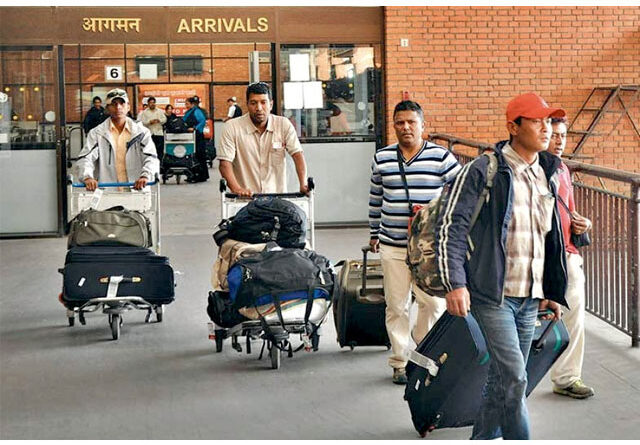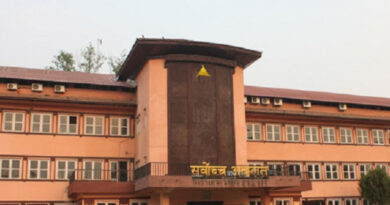Implementation of guidelines to repatriate stranded workers fraught with challenges
On July 15, the Nepali Embassy in Qatar posted a list of names of Nepalis selected to fly home on flights scheduled for July 17, 18 and 20, on its Facebook page. Nabaraj Lamichhane, a migrant worker, posted a comment on the post that reflects the plight foreign workers desperate to return home amid a global pandemic.
“I haven’t received my salary for the last four months, but my name is still not on the list,” he commented. “We should have regular flights from Qatar so that those who want to return on their own expenses can return whenever they want to,” Lamichhane said. “If the government repatriates only 150 in three days, I don’t know when I can return home. The government and the embassy should do something about it.”
Four days ago, another migrant worker Sagar Malla lamented on Facebook, “When will I fly back? I don’t have a valid visa nor have I had work for the last five months. When will my turn [to return home] come? There should be regular flights.”
Social media accounts of the Nepali Embassy in Qatar, other countries in the Persian Gulf and Malaysia, have been flooded with such comments from stranded Nepali migrant workers waiting for their turn to return home.
Even after the government started bringing workers who could pay for their tickets themselves or get their employers to pay, a large number of workers who have no means to pay for their flight home have been helplessly looking up to the government to return home.
The Supreme Court recently ordered the government to bring workers home using money from the Migrant Workers’ Welfare Fund, maintained by the Foreign Employment Board, by drafting a set of guidelines.
Last week, the Cabinet approved the guidelines paving the path for the repatriation of stranded Nepali workers, who had migrated with labour permits.
The guidelines say that workers who haven’t received air tickets and other expenses from their host country, employer, or recruiting agencies to return home, shall be entitled to financial support from the government.
However, labour migration experts and labour rights activists say the guidelines and its implementation may further delay the prospects of migrant workers returning home.
“The government clearly issuing criteria for repatriation is a welcome move,” said Rameshwar Nepal, a labour migration researcher. “Likewise, provisions to provide reimbursement to those who meet the criteria, but have already returned home on their own, is also praiseworthy.”
Despite the encouraging provisions in the document, there’s doubt that the implementation of the guidelines will be smooth and efficient, said Nepal, South Asia director at Equidem Research, a UK-based human rights research organisation. The main hurdle is likely to come from the process to verify the eligibility of migrant workers to return home on a government-sponsored flight.
The process, according to the guidelines, shall begin after stranded workers file an application with Nepali missions abroad. The embassy is to inform the recruiting agency concerned to check their status. If the worker concerned has not received his/her salary, facilities and air ticket from the employer as per their contract, Nepali missions abroad will take the initiative to get them such facilities.
Only after ensuring that a worker did not receive air tickets and other expenses from the host government, employer or the recruiting agency, will the board sponsor his/ her flight to Nepal.
“If the government doesn’t set up such stringent criteria, even those who can pay for their tickets will apply to return on government support. But there is a risk that the whole process will turn problematic if not monitored efficiently,” said Krishna Neupane, a lawyer and general secretary at the National Network for Safe Migration.
“Even if one stakeholder does not respond on time, the whole process gets delayed and workers are already in distress.”
Researcher Nepal said that the guidelines add work to Nepali missions already under stress. “Nepalo embassies are under-resourced even for normal times. With more work burden and lengthy verification process, repatriation of stranded workers might go on for months.”
After the pandemic struck major labour destination countries, thousands of Nepali workers have lost their jobs and are trying to return home. Several estimates have shown that up to 500,000 Nepali workers might return home in the long run.
A total of 34,647 Nepalis, mostly from the Gulf and Malaysia, have returned home as of Wednesday on 220 flights.
The government has not made clear the timeline for the fresh repatriations that shall be bank-rolled by the fund.
“The guidelines have come into the force. Now, the Nepali missions will start collecting details of those who need to be repatriated,” said Suman Ghimire, spokesperson for the Ministry of Labour, Employment and Social Security. “Workers are already returning home on their own too. Our main concern is that Nepalis should not be left stranded abroad.”
courtesy : TKP





